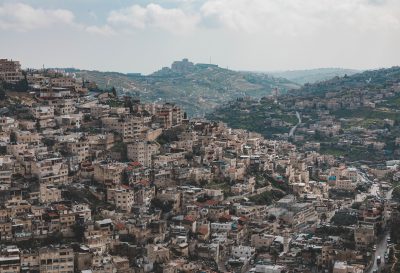
Jerusalem
Avirnaki: Clean #Jerusalem from Air Pollution
“Avirnaki” aims at reducing vehicle emissions affecting pedestrians and residents of Pilot City Jerusalem through the implementation of a Low Emission Zone.
ReVeAL will allow Jerusalem to implement its low emission zone and further expand it towards a zero-emission zone, resulting in the highest impact and widest balance of sustainable mobility considerations for the city’s residents.
Gil Reichman Head of Environmental Quality Department
The City of Jerusalem is considered the largest city in Israel and has a total land area of approximately 125 square kilometres, with a population of 850.000 inhabitants and a population density of 6.789 inhabitants per square kilometre. Its traffic volume is 1.070.000 trips per day. Currently, traffic congestion and traffic flow present major challenges for the city and its centre in particular.
The Municipality of Jerusalem has been engaged in a comprehensive development and mobility plan focused inward – on the city centre – and outward – on the greater metropolitan area – to meet the dual challenge of meeting the needs of its multi-cultural population whilst simultaneously being able to host the many visitors who come to experience its historical, religious, and cultural heritage.
Jerusalem’s transportation plan is based upon a policy of inverting the mobility hierarchy by giving the highest priority to nonmotorized pedestrian and cycling transportation, followed by public transportation and, lastly, by private vehicles. Thus, city-centre LEZ will be implemented by using license plate recognition technology. In two further stages, the zone will increase in size and the restrictions will become stricter, progressing towards a ZEZ. The LEZ results will allow a better understanding of the difficulties, the engagement process and access criteria needed to move from a LEZ to a ZEZ and will possibly jumpstart the existing initiative of bus providers (public and private) upgrading their fleets and of merchants sending freight on lighter, cleaner trucks. The ZEZ will possibly have spill-over benefits outside of the cordon.

“Avirnaki” aims at reducing vehicle emissions affecting pedestrians and residents of Pilot City Jerusalem through the implementation of a Low Emission Zone.

Last week, as Jerusalem’s pilot city Coordinator, Rupprecht Consult visited the city’s Environmental department that is involved in ReVeAL.
This website uses cookies so that we can provide you with the best user experience possible. Cookie information is stored in your browser and performs functions such as recognising you when you return to our website and helping our team to understand which sections of the website you find most interesting and useful.
Strictly Necessary Cookie should be enabled at all times so that we can save your preferences for cookie settings.
If you disable this cookie, we will not be able to save your preferences. This means that every time you visit this website you will need to enable or disable cookies again.
